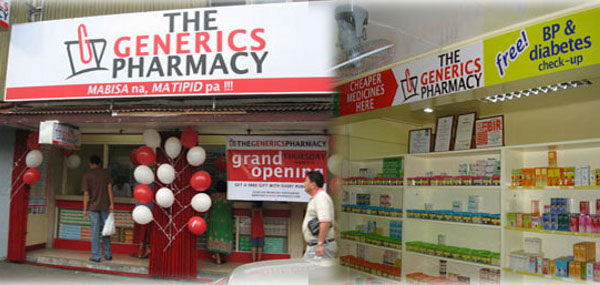Intramuros, Manila—How do generic medicines fare against branded ones in the Philippine market?
The assumption that branded drugs are superior when compared to generic medicines has been subject of debate since the late 1980’s.
WHAT ARE GENERIC DRUGS?
The World Health Organization (n.d.) defines generic drugs as pharmaceutical products meant to be identical to an innovator’s product. These generic drugs are to be developed outside of the innovator’s license and sold after the patent’s expiry date and other restricted rights.
In other words, generic medicines are the exactly the same as branded drugs. Both of these drugs offer the same safety, quality, and effectiveness.
Generic and branded medicines are not made in different factories, wherein the latter is better than the former. As a requirement, all medicines to be manufactured in factories must reach specific quality standards. The Bureau of Food and Drug administration (BFAD) will not allow these factories to manufacture drugs if they do not meet these standards in the first place (Ocampo, n.d.).
According to Ocampo (n.d.), generic and branded medicines work the same way too due to both having the same active ingredients.
THE DIFFERENCE OF BRANDED AND GENERIC
The price of branded medicines are higher than that of generic ones because more money is allotted for advertising and marketing even though the manufacturing processes are the same (Gonzales, 2014).
On the other hand, generic and branded medicines differ in appearance since trademark laws do not permit the former to have these same qualities (Ocampo, n.d.). Taste and appearance, for this matter, do not affect how the drugs work.
DRUG PRESCRIPTION
Generic medicines have been made to be affordable and efficient since the implementation of the Generic Drugs Act of 1988—a law that ensures generic medicine to be sold at the cheapest available cost and be free of charge to poverty-stricken patients.
Despite the Generics Drug Act’s attempt to promote generic medicine, it did not end in an increase of its sales. The sales by value of generic medicine are only about 5% mostly due to the low public perception of buyers and sellers to it (Batangan, n.d.).
A 1999 survey revealed that only 34% contained generic drugs in the 91% of sick respondents that were given prescriptions by physicians (Wong et al., 2014). According to Wong (2014), this presented a trend that more physicians prefer to only write the brand name of medicines and a lessened practice of generic prescription.
Additionally, a survey conducted by RB (1991) showed that 70% of the physicians, the respondents, are opposed to the Generics Drug Act of 1988. A greater number of physicians believe that the BFAD is incapable of assuring the quality of the medicine.
Bibliography
Wong, et al. (2014). The Prevalence of Philippine Prescribing, Dispensing, and Use Behavior in Relation, to Generic Drugs and their Risk Factors. Makati City : Philippine Institute for Development Studies.
Batangan, D. B. (n.d.). Medicine prices, availability, affordability and price components. Quezon City : Institute of of Philippine Culture, Ateneo de Manial University.
Gonzales, E. (2014, July 29). Generic drugs vs branded drugs. Retrieved from http://www.mb.com.ph: http://www.mb.com.ph/generic-drugs-vs-branded-drugs/
Ocampo, R. D. (n.d.). Generic vs Branded: What Are Generic Medicines? Retrieved from http://www.raindeocampo.com: http://www.raindeocampo.com/2014/06/15/generic-vs-branded-what-are-generic-medicines/
Organization, W. H. (n.d.). Generic Drugs. Retrieved from http://www.who.int: http://www.who.int/trade/glossary/story034/en/
RB, D. (1991). The new Philippine Generic Drugs Act: a physician’s viewpoint. Manila: Clinical Epidemiology Unit, University of the Philippines.
-Jireh
